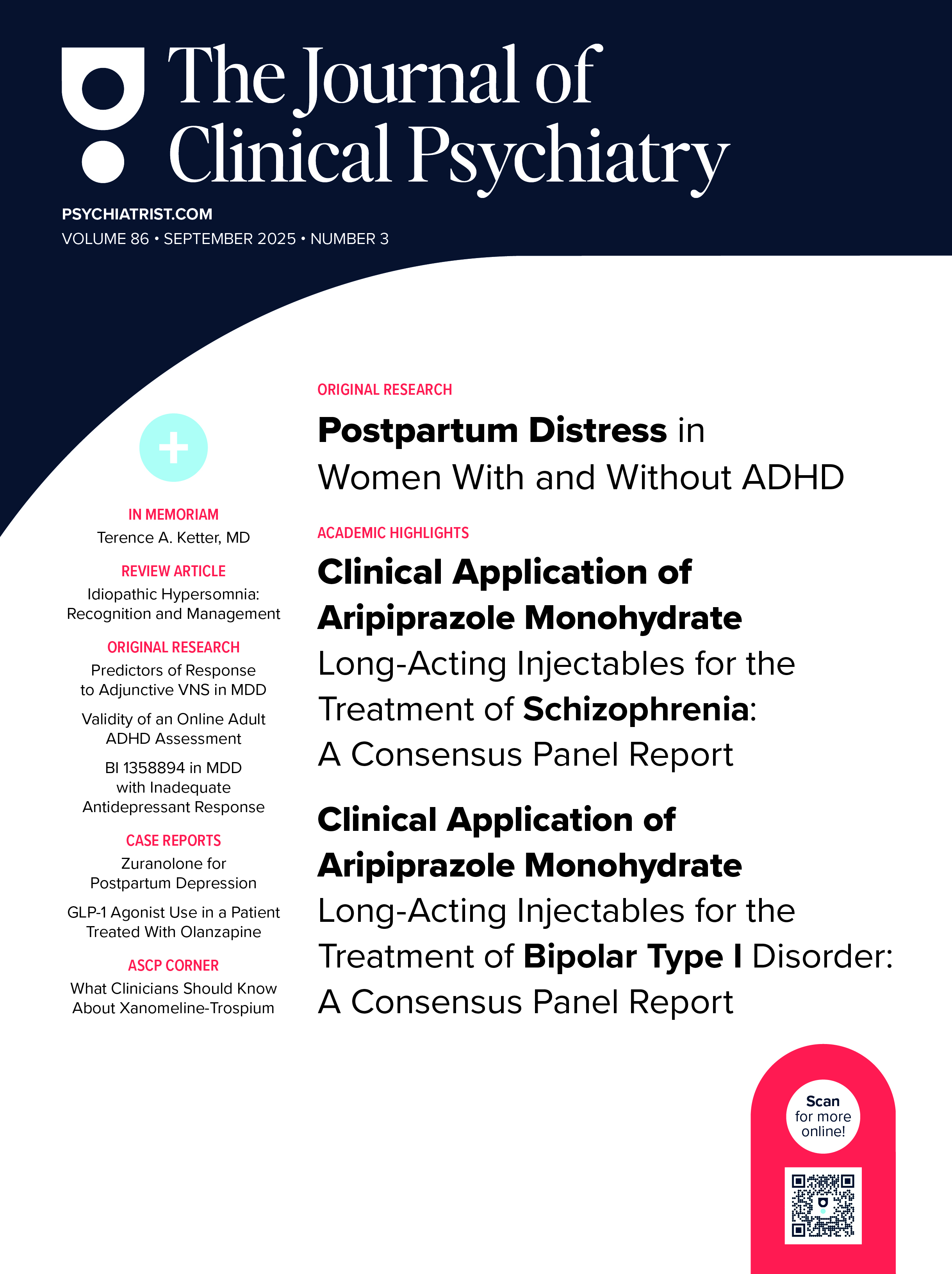Objective: This study assessed the efficacy and safety of sertraline in the treatment of generalized anxiety disorder (GAD).
Method: The study was conducted from April 2000 to May 2002. Outpatients with DSM-IV GAD (N = 326) who satisfied inclusion/exclusion criteria and completed a 1-week screening phase were randomly assigned to 10-week double-blind treatment with flexible dosing of sertraline (50-200 mg/day) or placebo. The primary efficacy measure was change from baseline in Hamilton Rating Scale for Anxiety (HAM-A) total score. Response was defined as a 50% or greater decrease in HAM-A total score at endpoint.
Results: Sertraline produced a statistically significant reduction in anxiety symptoms, as measured by HAM-A total change scores (p = .032), HAM-A psychic anxiety subscale (p = .011), and Hospital Anxiety and Depression Scale-anxiety subscale (p = .001). Response rates were significantly higher (p = .05) for the sertraline group (59.2%) compared to the placebo group (48.2%). Sertraline was well tolerated, with only sexual side effects reported significantly more often by subjects receiving sertraline than those receiving placebo.
Conclusion: Despite the relatively small between-group differences, study findings suggest a role for sertraline in the acute treatment of GAD.
Please sign in or purchase this PDF for $40.00.





